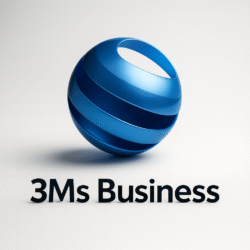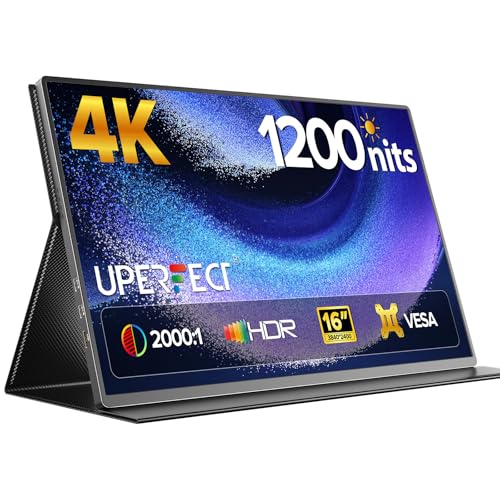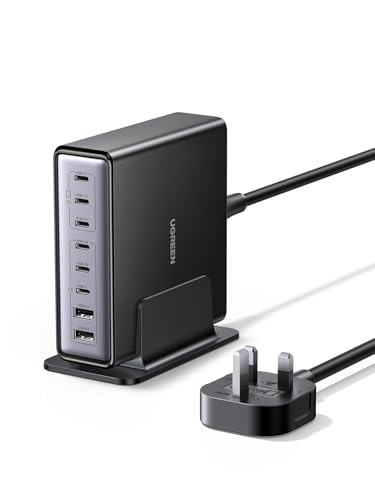Failure to Protect Core Profit Pools
Your business faces profit decline even when top-line numbers remain strong because you have not secured the essential profit pools that sustain your operations. The speed at which profits move between different segments and channels and partners exceeds what most dashboard systems can detect. Your business value creation areas need protection because competitors will be taken over by competitors if you do not defend them. The cash-generating machine that supports your business operations will suffer damage when your growth initiatives consume its resources.
The definition of a profit pool includes its actual meaning and what it does not represent.
A profit pool represents more than your largest market segment or your fastest-growing product line. The profit pool exists as a detailed map which shows economic profit distribution throughout your value chain by customer micro-segments and product lines and channels and geographic locations. Leaders who review their maps four times per year discover changes before others do because distributors take more profit and fast channels give back revenue and premium products secretly consume high-end product mix.
Two main findings from recent strategic initiatives demonstrate that (1) The distribution of industry profit pools undergoes changes because of technological advancements and regulatory requirements and capital expenditure costs and (2) Successful companies track profit pool changes through moat-based explanations that include scale advantages and switching barriers and network effects instead of pursuing revenue growth alone. Morgan Stanley, BCG
The analysis requires you to link your map with customer segmentation data and contribution analysis for proper structure.
Five Warning Signs You’re Exposed
- Share rising, profit flat. The increasing share of low-margin segments hides a deteriorating core business performance.
- Price leakage across channels. Uncontrolled discounts in one distribution channel create price erosion throughout all other market routes.
- Cost-to-serve bloat. Service tiers and SLAs expanded at a faster rate than the company managed to capture additional value.
- Cannibalization without fences. The “good-better-best” system lacks defined boundaries which allows “good” products to replace “best” products including your top-selling SKU.
- Regulatory overhang. Your business faces margin compression because of merger control regulations and dominance thresholds and changing compliance expenses unless you develop defensive strategies in advance. The Saudi Arabian government has introduced new economic concentration rules which establish stricter requirements for business control and filing requirements so strategic planning becomes essential. Addleshaw Goddard
A pricing strategy https://3msbusiness.store/discount-discipline-stopping-the-race-to-the-bottom/ and pocket-price waterfall analysis should be performed when price leakage occurs https://3msbusiness.store/value-based-pricing-charge-for-outcomes-not-hours/ .
Map → Moat → Measures: The Core Framework
1) Map the pool.
Create a profit pool matrix starting from the bottom which organizes customer micro-segments across product families and channels. The matrix requires data entry for revenue and gross margin and cost-to-serve and net contribution and capital intensity. Establish a core segment threshold at 60% of total economic profit and identify non-core areas that drain profit from core segments.
2) Moat diagnostics.
Assess the core business segments through moat attribute scoring which includes cost advantage and switching costs and brand power and network effects to detect any signs of decline. The “moat” perspective used by investors provides a method to track how profits evolve and concentrate throughout time. Morgan Stanley
3) Measures that bite.
Organize your findings into specific controls which include pricing restrictions and channel management systems and service level systems and product SKU optimization and partner revenue models that use incentive systems.
Defensive Plays That Actually Work in 2025
A- Pricing fences with teeth
Establish specific criteria that prevent lower-tier offers from reducing premium mix value through minimum volume requirements and feature restrictions and contractual obligations. Leaders who implemented proactive price fence adjustments and indexation clauses during inflation and input price volatility periods managed to protect 200–400 basis points of their profit margins. Simon-Kucher
B-Profit-aware channel governance
The implementation of profit-share parity clauses enables promotional funding to originate from the initiating party rather than affecting your company’s profit and loss statement in other channels. The system requires partners to exchange data for monitoring both pocket prices and product mix distribution.
C-Service tiers tied to willingness-to-pay
The company should establish SLAs for different customer segments while requiring premium contracts or fees to access expedited services. The company can recover uncharged value while minimizing the differences in service costs.
D-Anti-cannibalization design
When introducing new “good” variants or digital self-serve options implement protective measures through feature restrictions and time-based and geographical limitations and establish performance metrics that focus on additional revenue generation rather than user acquisition numbers. Academic research along with industry studies demonstrate that unprotected new offers tend to transfer existing value instead of generating new value. BCG
E-The GCC/KSA region requires M&A and JV operations to follow regulatory guidelines.
The GCC region particularly Saudi Arabia requires businesses to predict merger review results and remedy plans which impact pricing power and integration benefits. The GAC introduced new rules in 2025 to determine control and threshold assessment so you should develop synergy cases and separate sensitive assets from the start. Addleshaw Goddard
The integration planning process requires teams to evaluate market entry obstacles and develop remedy strategies.
The 90-Day Plan for Strengthening the Core Business Foundation
The first thirty days of the plan
Require a complete analysis of profit and loss statements.
The profit pool matrix requires SKU-by-segment resolution to identify economic profit leaders and destroyers among the top 10 items.
The analysis of price movements through channels reveals more than 2% of lost revenue.
The calculation of segment-specific costs reveals which areas exceed 20% above the median value.
The core segment moat scorecard uses a 0–5 rating system to evaluate four moat factors for each segment. Morgan Stanley
Days 31–60: Plug the holes
The two main cannibalization paths require three pricing fences that include eligibility checks and feature locks and indexation to achieve price increases of 150–250 bps. Simon-Kucher
Establishing different service levels while generating revenue from at least two premium service level agreements.
Remove unprofitable products from its portfolio by eliminating the least valuable SKUs that generate negative incremental profit.
Modify its channel agreements to achieve equal profit-sharing during promotional activities.
Days 61–90: Fortify the moat
The sales incentives should focus on core contribution growth instead of revenue targets.
The company should introduce a high-retention package to its most profitable micro-segment during the pilot phase.
The company should create a regulatory protection system through the integration of KSA/GCC deal screening protocols into corporate development procedures. Addleshaw Goddard
The executive team should receive a profit pool review report on a quarterly basis.
A successful price change will produce a distinct audible sound that indicates price competition has been avoided instead of being taken in by the market.
The framework includes specific performance indicators which serve as tracking metrics.
The Core Contribution Share (CCS) metric should reach 70% of total economic profit from defined core segments by Day 90.
The price realization rate after promotional activities should reach +200–300 bps in core segments by Day 60 while maintaining a ±50 bps difference with non-core segments. Simon-Kucher
The cost-to-serve variance between top and median segments should decrease to less than 10% by Day 90.
The cannibalization rate should stay below 5% after 60 days when premium customers switch to value SKUs according to mix-adjusted contribution data.
The Moat Score (Core Avg) should increase by 0.5 points on a 0–5 scale during the first 90 days through strategic changes in customer retention and market dominance. Morgan Stanley
The KSA regulatory system requires 100% of deals to pass GAC 2025 guidelines before LOI submission and no unexpected issues during the filing process. Addleshaw Goddard
Leadership Principles to Keep the Core Safe
Profit pools should receive the same treatment of products in business operations. A profit pool owner should receive a dashboard and quarterly release notes for their management responsibilities.
The implementation of operational barriers requires immediate action. The absence of tooling makes policy ineffective because it remains as empty theater so organizations should integrate rules into their CPQ/ERP systems and partner contracts.
The company should direct its investments toward strengthening its moat instead of pursuing superficial growth initiatives. The company should allocate funds to develop switching-cost features and loyalty mechanics and scale economics which enhance moat scores. Morgan Stanley
The organization should maintain awareness about the specific characteristics of each local market. The GCC market shows increasing competitive competition and enforcement power so businesses need to start legal and pricing and corporate development planning together to prevent margin-diminishing remedies. (Legal Blogs, UN Economic and Social Commission for Asia
Amazon products:
- Easily complete your daily tasks with the Lenovo 16″ ThinkBook 16 G6 Laptop. Whether you are a student or a business pro…
- 16″ WUXGA (1920×1200) IPS 300nits Anti-glare, Non-Touch, 45% NTSC Display backed by integrated AMD Radeon Graphics, prov…
- RAM: 32GB DDR4 Memory; Hard Drive: 1TB PCIe NVMe M.2 SSD.
- 1200 Nits True Brightness: This 4K portable monitor is designed specifically for high light environments, with an anti r…
- 4K True Color Immersion: The 4K UHD (3840×2400) ultra-high resolution of this laptop monitor has excellent accuracy and …
- Recyclable Aluminum Material: Our monitors use high-quality aluminum not only for their modern aesthetics and durable st…
- 【8-Port 200W Hyper-Powered GaN Charging Station】Charge your device with the total 200W power! This premium GaN station 8…
- 【Single Port Up to 100W Fast Charging】Unlock Lightning Speed: Three USB-C ports (C1/C2/C3) can provide up to 100W power,…
- 【Multiple Protection for Desert Climates】With a flame-retardant PC shell, this 200w charger can withstand temperatures a…
- Display: 1.72-inch AMOLED screen features a resolution of 212 x 520 pixels, 1500 nits HBM brightness with automatic adju…
- Operating System: Xiaomi HyperOS 2 and More Fun Function
- Sensors: Heart rate monitor, SpO₂ sensor, accelerometer, gyroscope, and ambient light sensor, Upgraded All round Sleep






